The first inkling we had that things weren’t good was when Bill got a shock from the camper. The power we plugged into may have been 220V, but our hairdryer/voltage tester had indicated it was 110. At any rate, there was now a short in the converter that handles our “shore power” and it was no longer charging the batteries that run the fridge and lights.
We have been having problems since we got the camper. Although they are working, neither the alternator on the truck nor the solar panel has been putting a full charge into the batteries, so the batteries gradually discharge. Nobody has been able to figure out why. The fix has been to plug the camper into 110 every chance we get as the converter will charge up the batteries. But the converter is now toast.
Bill and the maintenance manager at the place we were staying drove into Mancora to find wire, and Bill spent a few hours running wires directly from the batteries on the truck to the batteries in the camper. The operation was a success and even the solar panel is working better, but as we don’t yet have a switch or a solenoid, we have to disconnect the wires when we park.
So, buoyed up with optimism, we left Mancora with no final destination in mind. The next city was Piura, and there we would have to find a dog friendly hotel. As we were near the westernmost point of South America, and the road signs indicated there were beaches, we took a chance on the fading daylight, and decided to travel on to Sechura in the hopes of finding a quiet resort on a quiet beach. By the time we found Sechura, it was nearing sundown, and it was obvious that this was no tourist town. It also had the look of a town where nobody makes much money. We drove through and didn’t see a hotel. The one beach showed camping on the sign but it looked a little dodgy. So we decided to push on.
The road takes you through a small desert. On the west is water, and hundreds of fair sized fish boats. Huge fish plants dot the shoreline. In some areas there appear to be forests that are really the masts of boats in storage.
The ioverlander app mentioned the possibility of camping in the desert, but we would have had to travel a long way in to be invisible from the highway. In places the sand or a flood had eroded the road. As we travelled on, the desert became sandier and the wind blew the sand across the road like snowdrifts. Another suggestion from the app was to camp at a spot just beside the highway. When we reached that spot, there was a police roadblock. The officer said it was too dangerous to camp, that we had to drive the 115 km to Chiclayo. It was already dark.
Driving after dark is too dangerous in Central and South America, because of the speed bumps that are everywhere, the wandering animals and the often inebriated pedestrians. We learned that the trucks with no taillights and the three wheeled motorized carts with no lights at all were also a hazard. The road was under construction, and the opposing traffic side had been paved. Our side was grooved and the shoulder was hard to see. There were no lines. In places the road was covered with sand. Cars raced past us. Shortly after Nancy suggested wandering animals should not be an issue in this empty desert, we killed a dog. It was black and ran suddenly into the path of the car. Out there it must have been feral, with no one to mourn it but us. Depressed, we drove on into the blackness. At times we caught up with slow unlit trucks. Bill was about to pass one, but didn’t. If he had, he would have hit the pedestrian dressed in black who was angling across the highway.
We finally got to Chiclayo. We drove past endless industrial yards, but there were no motels. We set the GPS for a hotel in the city. The GPS led us into a maze of streets. After one turn, it appeared we were in trouble. In the glow of lights we could see people in the road, sitting and standing, cars were parked haphazardly, and there was only a narrow passage through the chaos. As we got closer we realized that this was a market that was being dismantled for the night, and the people were busily and cheerfully packing up their wares and purchases. After someone moved a car for us so we could squeeze past the honking behind us diminished considerably. We tried programming the GPS to take us to another hotel, but the traffic, noise and lack of room on the streets got worse. Finally a taxi driver yelled at us to follow him to a parking lot. We did. We parked. The hotel across the street refused to take the dog, but the taxi driver loaded us into his cab and drove us to a hostel that was more welcoming.
Everybody we met in Chiclayo was happy. People said hello to us on the crowded noisy streets. Another taxi driver kept meowing at Capi, making everyone laugh. The lady at the hostel who also ran the chicken restaurant next door brought us an incredibly good feast of chicken, fries and salad much appreciated by all, though Capi skipped the salad.
The bed was comfortable and the shower could be coaxed to give hot water, and even though we had to find the taxi driver from the night before to get us back to our truck, we enjoyed our night in Chiclayo. But we never want to drive there again.

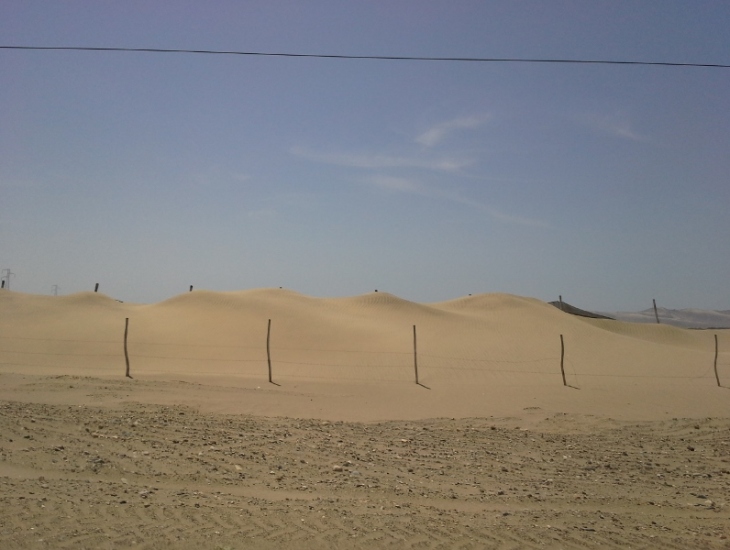
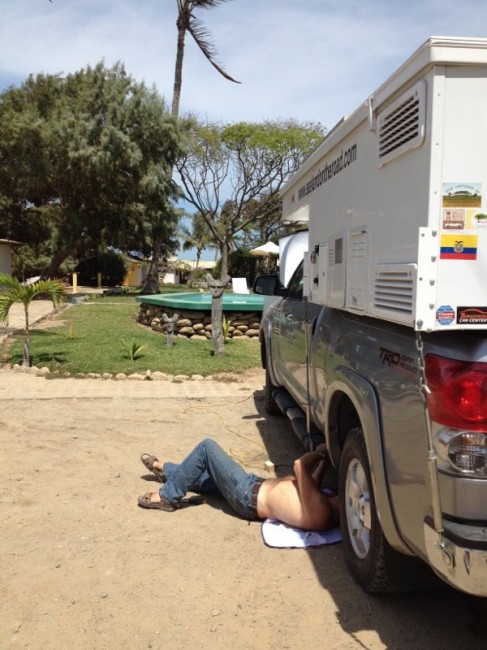
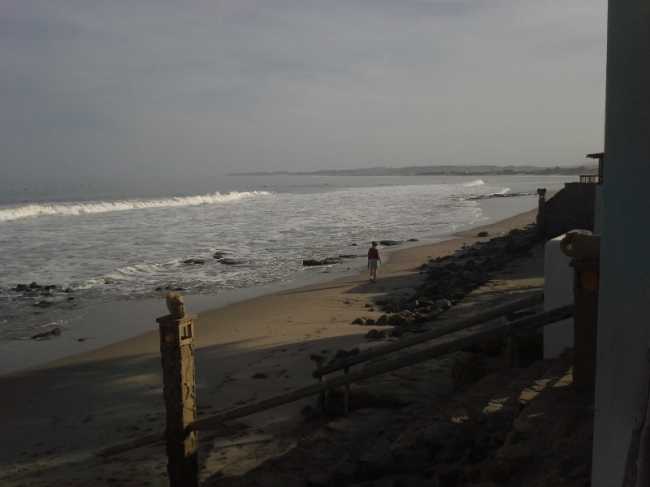
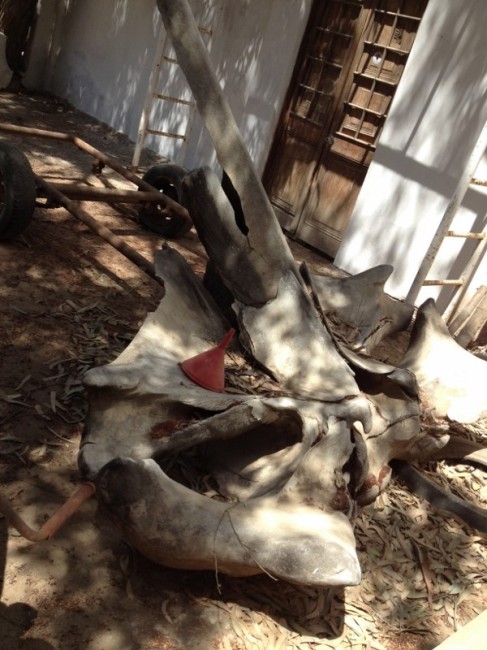
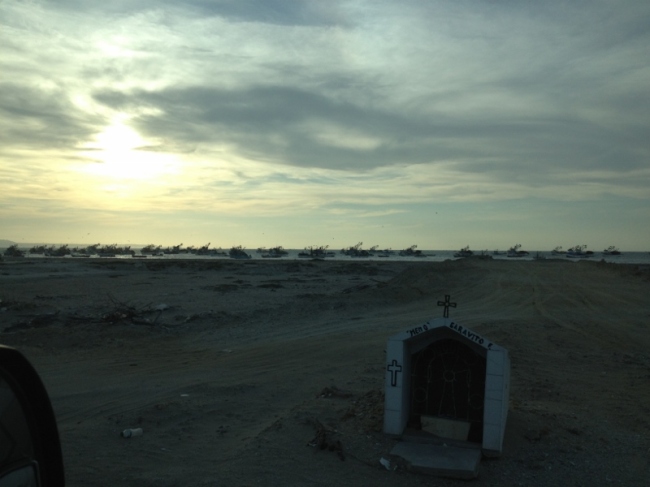
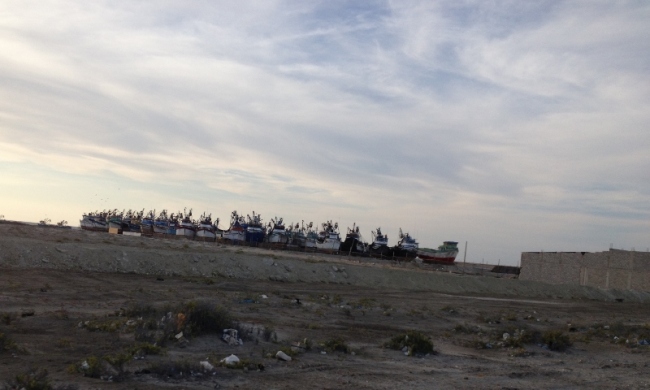
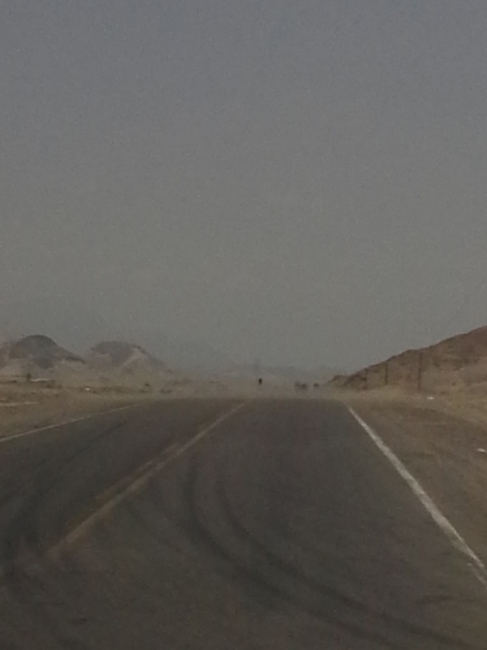
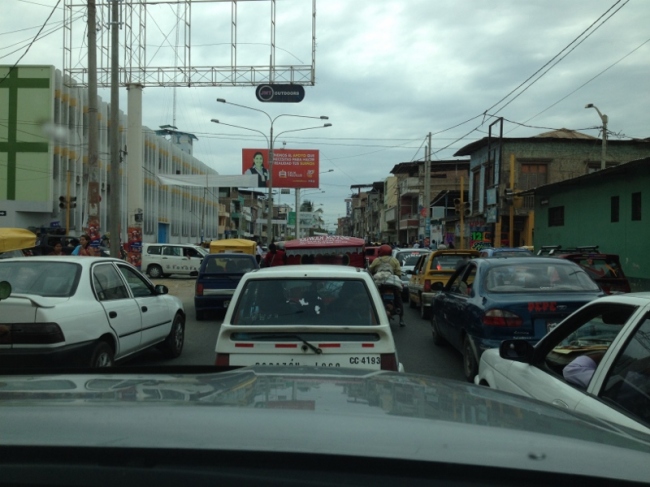
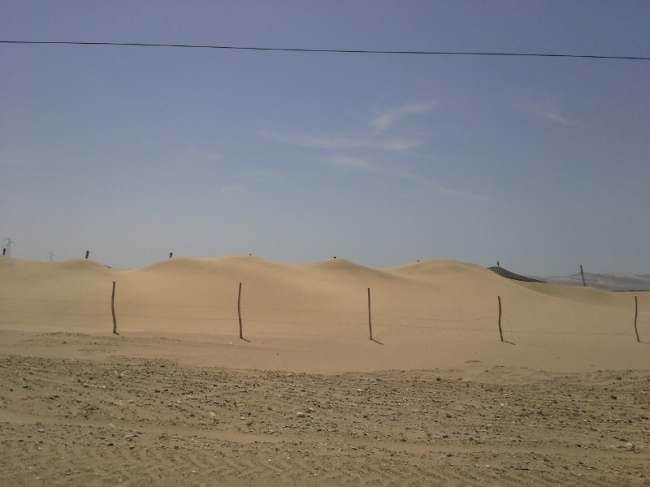
My heart was pounding as I read your account of the night drive… so scary and so sad too. I join you in mourning for the black beast. It could have no better mourners than the two of you as you demonstrate with Capi everyday, your respect, devotion and love of man’s best friend, but I also give thanks that it did not cause physical damage or harm to you or the camper and that coming through that unhappy darkness into the day you found smiling, happy strangers and a renewed confirmation that life is very good indeed.
We at home are riveted to your GPS progress and to your journal. We love it and feel part of the adventure. Safe journey. Love. Deborah
PS. I’m comfortably moved in to the condo. No pictures up yet but perhaps by the time you’re home. I look forward to the three of you coming to visit me. Yes, my condo is dog friendly, as am I!